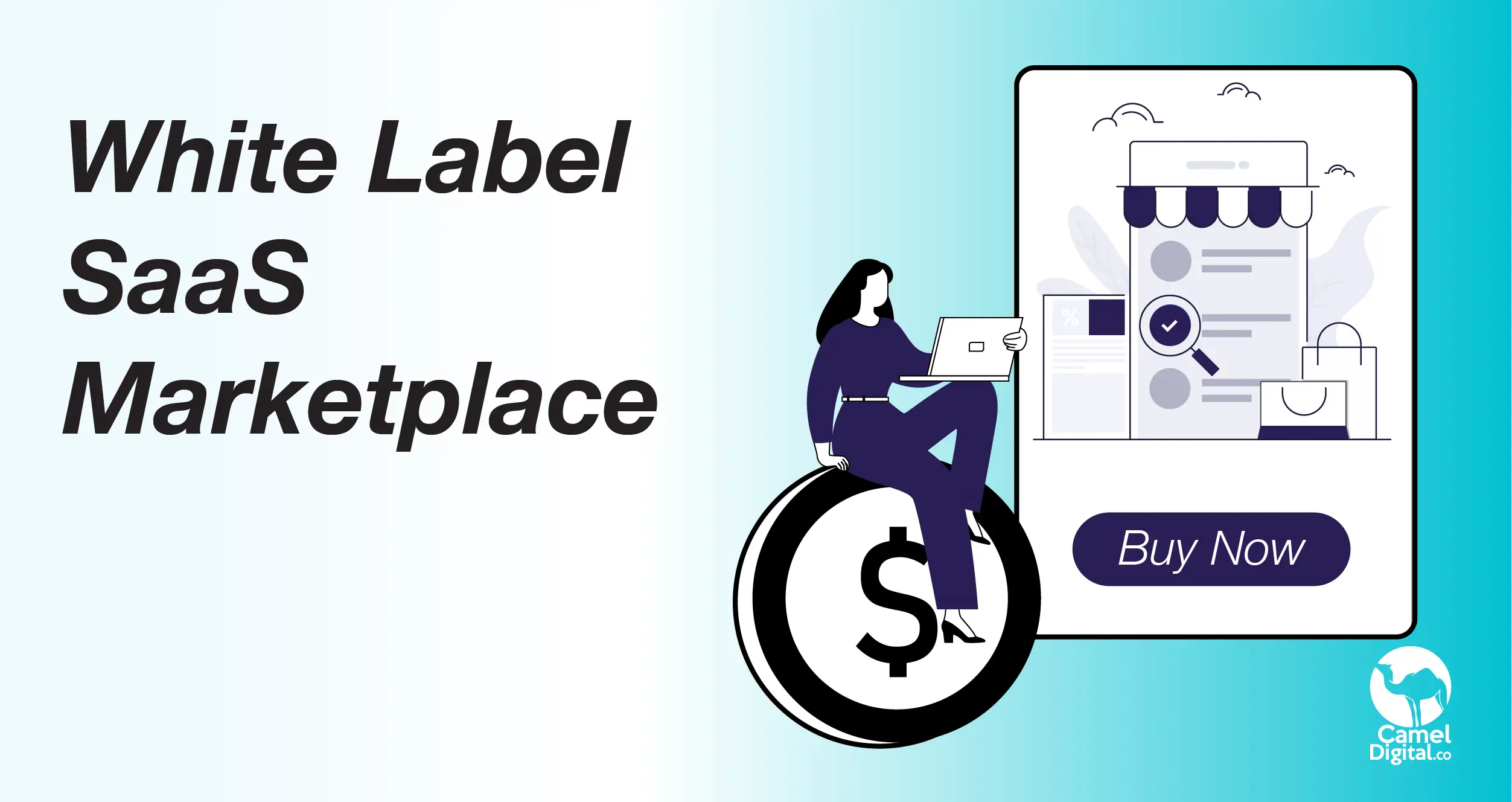There are two kinds of business people: those who excel at creating products and those who excel at selling them. The real breakthroughs happen when these two worlds unite. In the SaaS space, that’s exactly what white-label makes possible.
Instead of spending years on development, you can take a ready-made, proven platform and brand it as your own. The provider powers the technology, while you bring the market, the brand, and the growth. Clients see only your name, while you deliver value without the weight of coding.
And if you’re into that journey right now, in this guide we’ll be covering:
- What is white-label SaaS?
- The best white-label SaaS platforms to resell;
- …and the challenges you should be ready for.
What Is White Label SaaS Software?
White-label SaaS software is a finished, continuously maintained product built by one company that you can rebrand, price, and sell as your own. Instead of investing time and money into building software from scratch, you take an existing solution, add your logo, colors, and domain, and present it under your brand.
How does this differ from a regular SaaS reseller model? With standard SaaS partnerships, you send customers to the vendor’s branded app, and the vendor controls pricing, billing, and roadmap.
With white-label, you control the product’s identity, packaging, and margins, while the vendor powers infrastructure and updates.
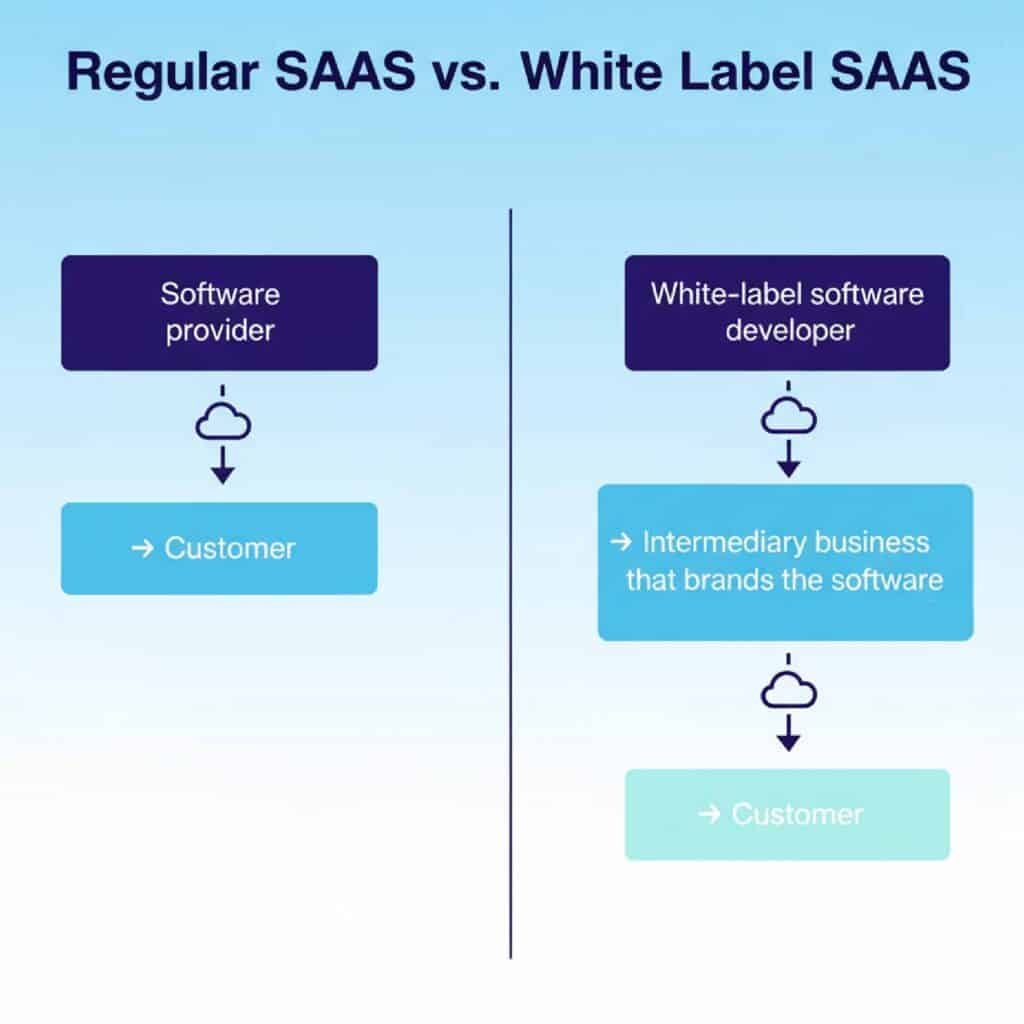
Example: a marketing agency launches a white-label CRM on crm.agency.com, calls it “Agency CRM,” preloads pipelines for its niche, bundles onboarding/support, and sets its own pricing tiers. Clients see only the agency brand and pay the agency, while the vendor ensures uptime, security, and new features. That’s the essence of white-label SaaS.
What to Look For in a White Label SaaS Platform
White-label SaaS may look like a quick path to revenue, but success depends on careful evaluation. If choose poorly, you risk low margins, frustrate clients, and strained vendor relationships.
Here are the core factors to review before choosing a white label SaaS platform:
- Custom Branding Capabilities: Some platforms allow only a logo swap, while others support full domain masking, custom dashboards, and white-labeled mobile apps. So, pay close attention to how deep the rebranding can go.
- End-User UX: The vendor’s interface becomes your reputation. Test the software as if you were the customer. Clunky navigation or outdated design reflects directly on your brand.
- Technical Support: Clarify who handles support. If the vendor provides tier-1 assistance, ensure it’s invisible to your customers. If you own support, confirm you’ll get fast, expert escalation from the vendor.
- Pricing and Reseller Margins: Look beyond the subscription cost. You need enough margin between wholesale and retail to cover sales, support, and marketing while still hitting your ROI targets.
- Documentation and Assets: Strong sales decks, training material, and API docs save time. Weak collateral means you’ll spend months creating resources instead of selling.
A scalable white-label SaaS should also meet ROI benchmarks. A solid SaaS ROI return is around 3:1, while an excellent one is closer to 5:1.
7 Best White Label SaaS Platforms
White-label SaaS platforms let you rebrand, customize, and resell ready-made software under your own name. They cut out development costs, letting you focus on marketing and client relationships while still delivering enterprise-grade technology. Here are seven of the best options.
SPP.co
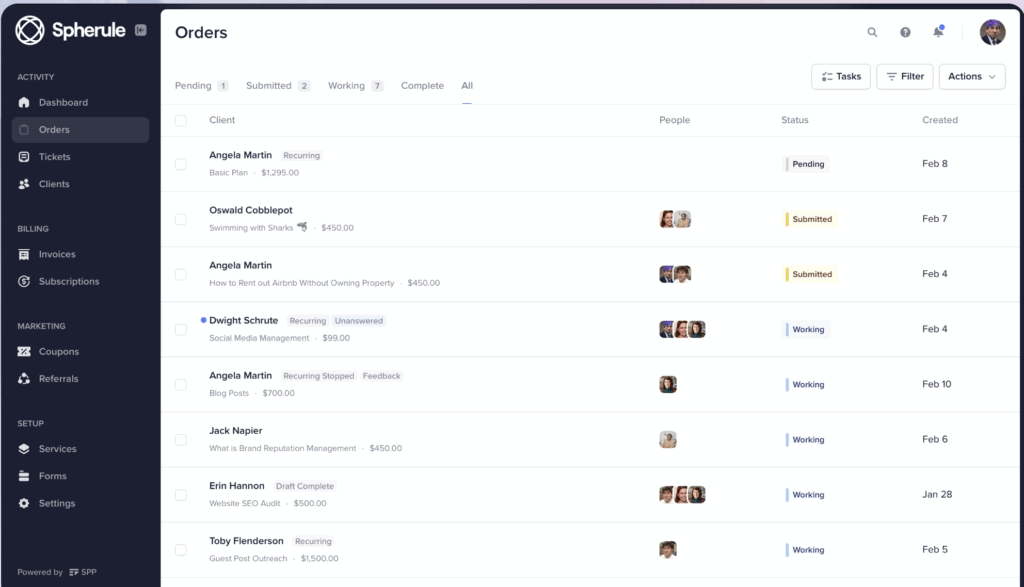
- Key features: Billing, client portal, invoicing, subscriptions, CRM forms
- Pricing: From $129/month for 5 teams with unlimited clients
- Ideal user: SEO, content, link building, and social media agencies
SPP.co gives you a fully branded client portal for managing services, billing, and communication as if it were built in-house. You control the look, pricing, and client relationships, while the platform handles the heavy lifting like automation, payment processing, and reporting.
Vendasta
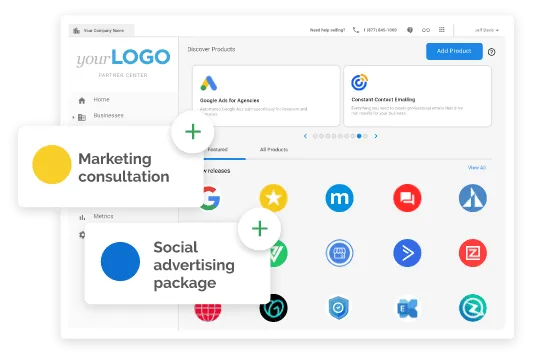
- Key features: AI workforce covering marketing, sales, and operations
- Pricing: Starts at $99/month for startup agencies and solopreneurs
- Ideal user: Agencies or consultants serving local businesses
Vendasta lets you present a powerful AI-driven platform under your brand. Clients get tools for acquisition, engagement, and operations, while the vendor handles APIs, integrations, and automation.
DashClicks
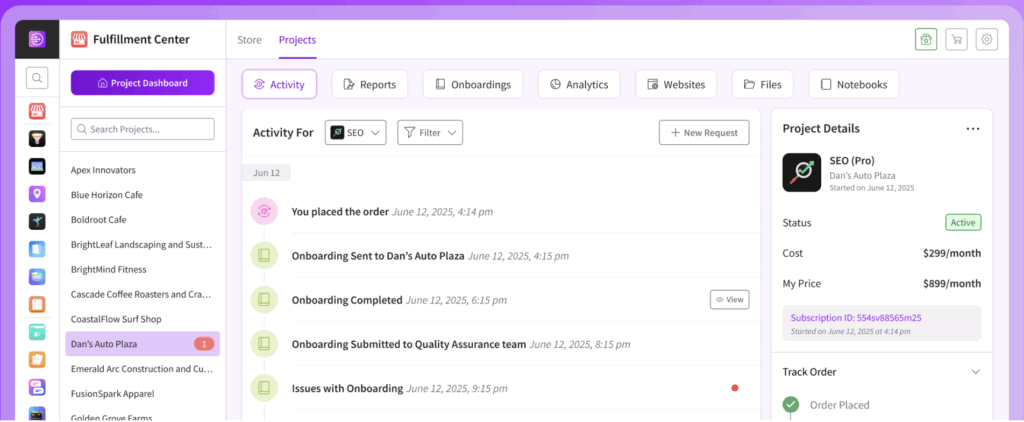
- Key features: Lead generation apps, CRM, website builder, InstaReports, InstaSites, project management, analytics
- Pricing: $199/mo unlocking all features
- Ideal user: Marketing agencies looking to resell software and fulfillment services
DashClicks is an all-in-one white-label SaaS platform that lets you launch a full marketing SaaS under your brand. You can offer websites, CRMs, lead management, and reporting tools without building them yourself.
GoHighLevel
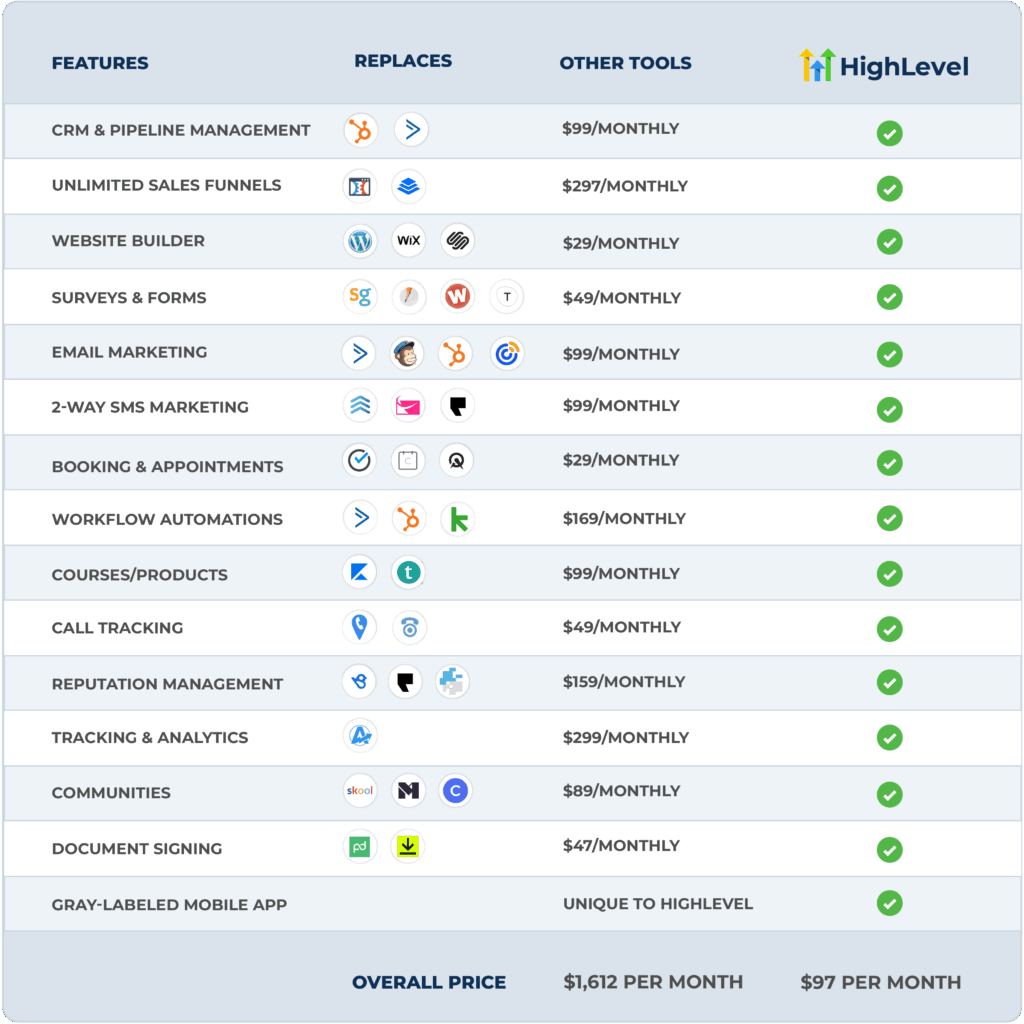
- Key features: CRM, social planning, reputation management, document handling, invoicing, POS
- Pricing: Starting at $97/month with unlimited contacts and users, plus up to three sub-accounts
- Ideal user: Agencies wanting to deliver a full-service CRM under their own brand
GoHighLevel allows full white-label customization, including logos, colors, and menu items. Beyond CRM, it includes tools for social scheduling, invoicing, and reputation management.
SuiteDash
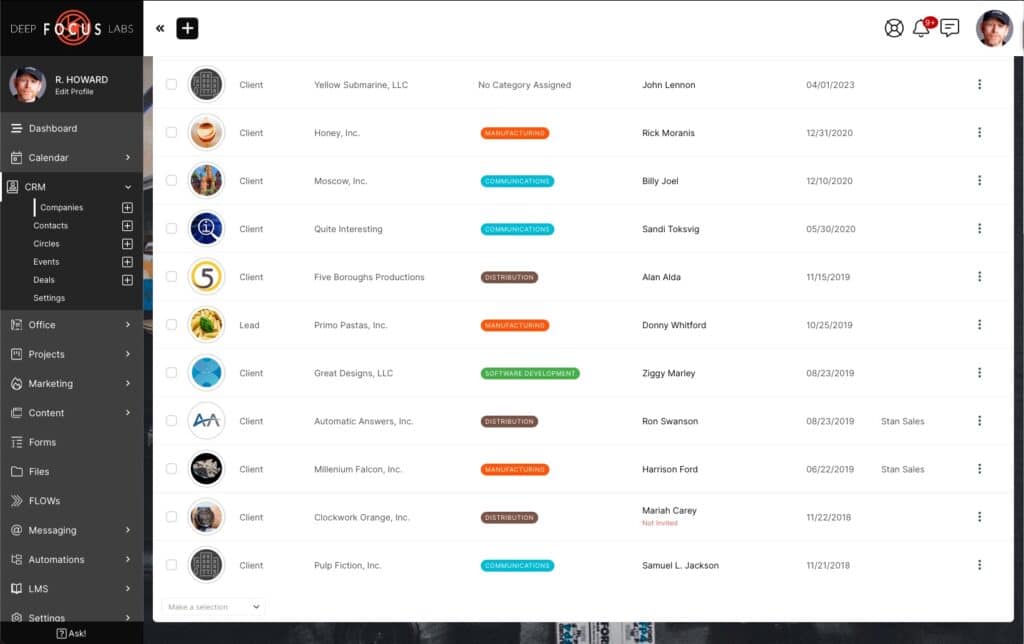
- Key features: CRM, client portal, project management, invoicing, file sharing, automation
- Pricing: Starting at $19/month
- Ideal user: Small to mid-sized businesses wanting a complete branded business suite
SuiteDash offers entrepreneurs a complete business management solution at an accessible price. You get a single workspace covering CRM, invoicing, projects, file sharing, and automation, fully customizable.
Weblium
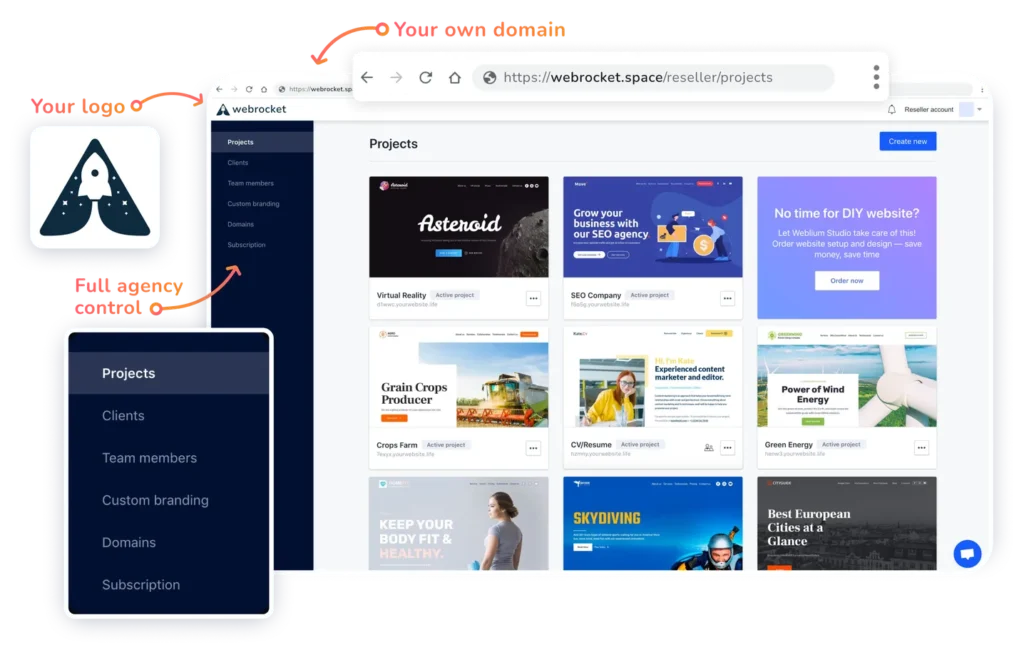
- Key features: White-label website builder, 300+ templates, team collaboration, hosting & security included
- Pricing: Starting at $24/month for 3 simultaneous projects (1 team member)
- Ideal user: Freelancers, agencies, or SaaS platforms offering branded site creation
Weblium lets you deliver branded websites with your logo and domain. Clients see only your SaaS marketing agency, while Weblium handles hosting, security, and uptime behind the scenes. Teams can collaborate on multiple projects, and clients can edit sites with ease.
Simvoly
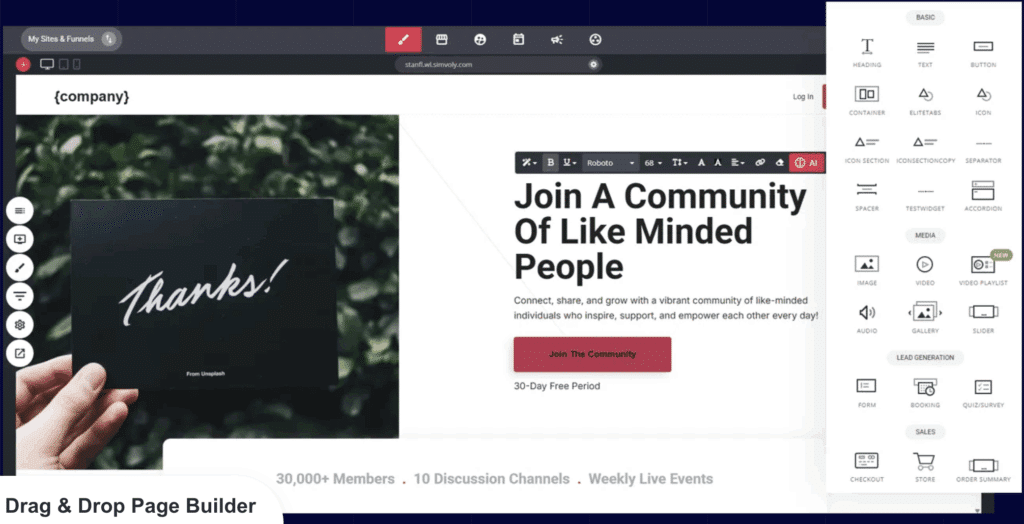
- Key features: Drag-and-drop builder, custom branding, templates, CRM, funnels, e-commerce, hosting & SSL
- Pricing: Starting at $59/month (1 project with 2 websites + 10 funnels)
- Ideal user: Agencies or entrepreneurs wanting a full DIY website and funnel platform under their brand
Simvoly gives you an all-in-one SaaS you can fully white-label and resell. Add your logo and domain to create a platform that feels in-house. Clients can register, pick a template, and build websites or funnels entirely on their own, no manual setup needed. Built-in CRM, e-commerce, email, scheduling, AWS hosting, and SSL let you package and price it your way while generating recurring revenue under your brand.
How Much Can You Make from White Label SaaS?
White-label SaaS margins can be significant, especially compared to traditional service-based work. Many resellers report average rates of $100–$700 per customer, per month, depending on the niche and product depth. Actual revenue depends on the pricing model you choose.
Per Seat/User
This model charges based on the number of users inside a client account. It works particularly well for CRMs, project management tools, and communication tools where team access is essential. Margins are predictable because you scale pricing with the client’s growth. It’s best if you’re targeting businesses that regularly add staff and need licenses for each.
Per Project
Per-project pricing ties cost to deliverables such as websites, SaaS marketing funnels, or campaigns, rather than continuous access. This approach is ideal for SaaS solutions that include builders or automation tools, where each project has a clear outcome. It allows for premium one-time charges while also leaving room for upsells on hosting, support, or maintenance. Margins can be slimmer without recurring add-ons, but high-ticket agencies thrive on this model.
Subscription Tiers
Tiered subscriptions are the most flexible, with packages like “Starter,” “Pro,” and “Enterprise.” This lets you bundle features and maximize perceived value. It’s especially effective when combined with targeted Google ads for SaaS campaigns, as targeted paid ads can accelerate sign-ups at different price points. Subscription tiers are best if you want scalable recurring revenue with strong upsell potential.
With healthy reseller margins around 40% and customer rates of $100 – $700 monthly, white-label SaaS can scale into a highly profitable recurring business when pricing models match your audience.
Earn Your Maximum from Your White-Label SaaS with Google Ads
Growing any SaaS in today’s market is challenging. Even with a strong white-label platform, standing out and converting leads into paying customers takes more than organic reach. Precise, funnel-based advertising helps capture qualified sign-ups.
That’s where Camel Digital, a B2B SaaS PPC agency, designs tailored Google Ads campaigns that guide prospects from awareness to trial to upgrade. With the right structure, your budget turns into sign-ups and recurring revenue instead of wasted clicks.
Challenges and Tips for White Label SaaS Success
A common pitfall in white-label SaaS is charging prices that don’t line up with how customers see your product’s value.
Many resellers simply mirror the vendor’s pricing, but that often cuts margins and makes your offer like everyone else’s. The better approach is to frame the software around your audience’s pain points: bundle services, add industry workflows, and price based on outcomes, not features. That’s how you turn “generic software” into a solution clients happily pay a premium for.
Branding and Differentiation
Just as two very different cars can share the same engine. What makes one desirable and the other forgettable is how it’s built and branded. White-label SaaS is the same: the core software may be identical, but the way you present it determines how customers see its value.
Don’t compete on price alone. Compete on differentiation. Strong branding and design aren’t decoration; they’re what make customers believe in your product. Clear writing turns technical features into benefits people understand. A polished, consistent look builds trust. Two resellers can sell the same software, but the one with sharper messaging, design, and customer experience will always win.
Even small touches, such as renaming features, tailoring onboarding for a niche, or adjusting the interface to match your brand, can make the platform feel built for your clients. That’s how you turn white-label software from “just another tool” into your product that customers trust and stick with.
Customer Support Burden
In white-label SaaS, clients see you as the provider, even though you don’t control the backend. Every login issue, bug, or billing question lands on your desk. If you’re not prepared, support can quickly become overwhelming.
Many resellers assume the vendor will handle everything quietly. In reality, without strong systems on the vendor side, you’ll be the one fielding endless tickets. That’s why choosing a partner with true white-glove onboarding matters. When new customers are guided step by step, shown how features fit into their workflow, and given resources like tutorials or knowledge bases, basic “how do I?” requests drop dramatically.
Instead of getting stuck in first-line support, you can focus on higher-value work: building relationships and upselling services.
Support also plays a major role in retention. Clients rarely leave because of missing features. They leave when they feel ignored. Fast responses, clear escalation paths, and proactive onboarding keep frustration low and loyalty high. The smoother your support system, the longer customers stay, and the stronger your recurring revenue becomes.
Churn Management
Churn is the silent killer of SaaS revenue. In white-label SaaS models, switching costs are low and competitors often sell similar solutions, so you have to work harder to keep clients.
The best way to reduce churn is to treat retention as an ongoing process. That means building strong feedback loops, monitoring usage data, and stepping in early when clients show signs of disengagement, like missed logins, incomplete setups, or falling activity.
Onboarding is especially critical. If clients don’t see value in the first 30 to 60 days, they’re far more likely to cancel. A structured onboarding program with clear milestones, guided walkthroughs, and early wins dramatically improves retention.
Vendors with white-glove onboarding lighten the load, but you still need to frame the product in your client’s language so they connect features to outcomes.
To keep customers engaged, layer on proactive strategies: personalized check-ins, ongoing training sessions, and in-app prompts that highlight underused features.
Retention isn’t just about fixing problems. It’s about constantly showing clients that the software makes their work easier. White-label SaaS businesses excel and stand out not because they sell a different tool, but because they deliver an experience customers don’t want to leave.
Bonus Tip: Marketing Budget Considerations
Customer acquisition costs (CAC) in SaaS are high, and that reality has to shape your strategy from day one. If you’re reselling in competitive spaces like email marketing or social media scheduling, you’re not just up against other resellers; you’re up against global companies with millions to spend.
High CPCs in paid campaigns and long timelines for organic SEO mean you need realistic expectations and a substantial SaaS marketing budget to break through.
The most effective approach is balance. SEO builds authority and long-term visibility, compounding over time. PPC gives you immediate reach and faster acquisition. Together, they create both a foundation and short-term growth. Skip PPC, and you stall. Skip SEO, and you never build lasting advantage.
Smart resellers also narrow their focus. Instead of chasing broad expensive keywords, they double down on niche audiences, long-tail searches, and funnel-based ad campaigns. By being precise and consistent with budget allocation, you can compete even in saturated spaces turning high acquisition costs into manageable, predictable growth.
How to Grow Your White Label SaaS Business
In 2025, white-label SaaS gives you the chance to take a proven product, brand it as your own, and deliver it to the right customers. You do not need to spend time on development or technical fixes because the product is already built and tested. The real challenge is selling it effectively. Success depends on reaching the right audience and positioning your brand as the one they trust.
At Camel Digital, we specialize in tailored PPC campaigns for SaaS. With more than $5 million invested in testing, we know what works to drive sign-ups and recurring revenue in a competitive market.
If you choose a white-label SaaS, partner with us to market and sell it effectively. You will reach the right audience, scale faster, and turn your product into a profitable business.
